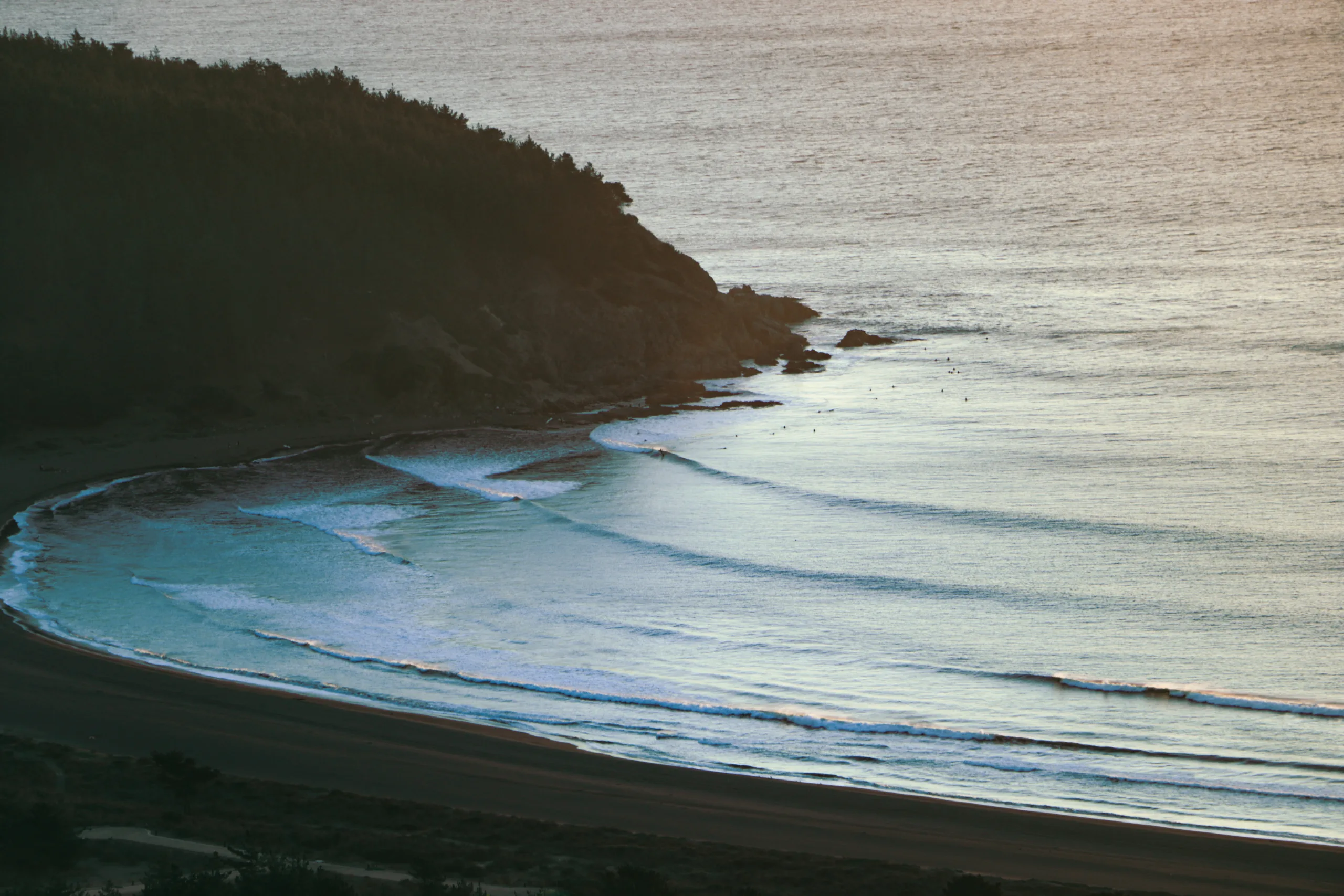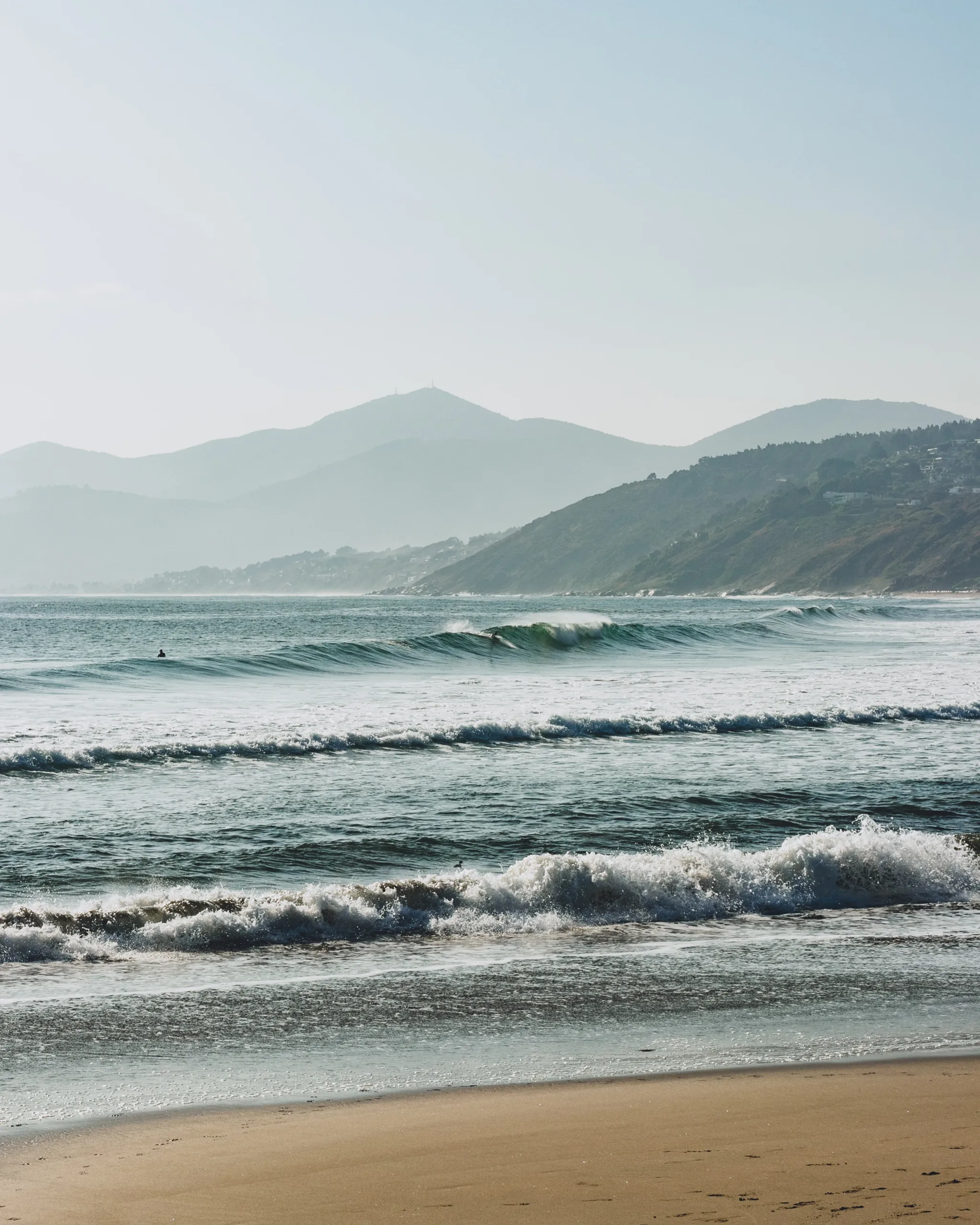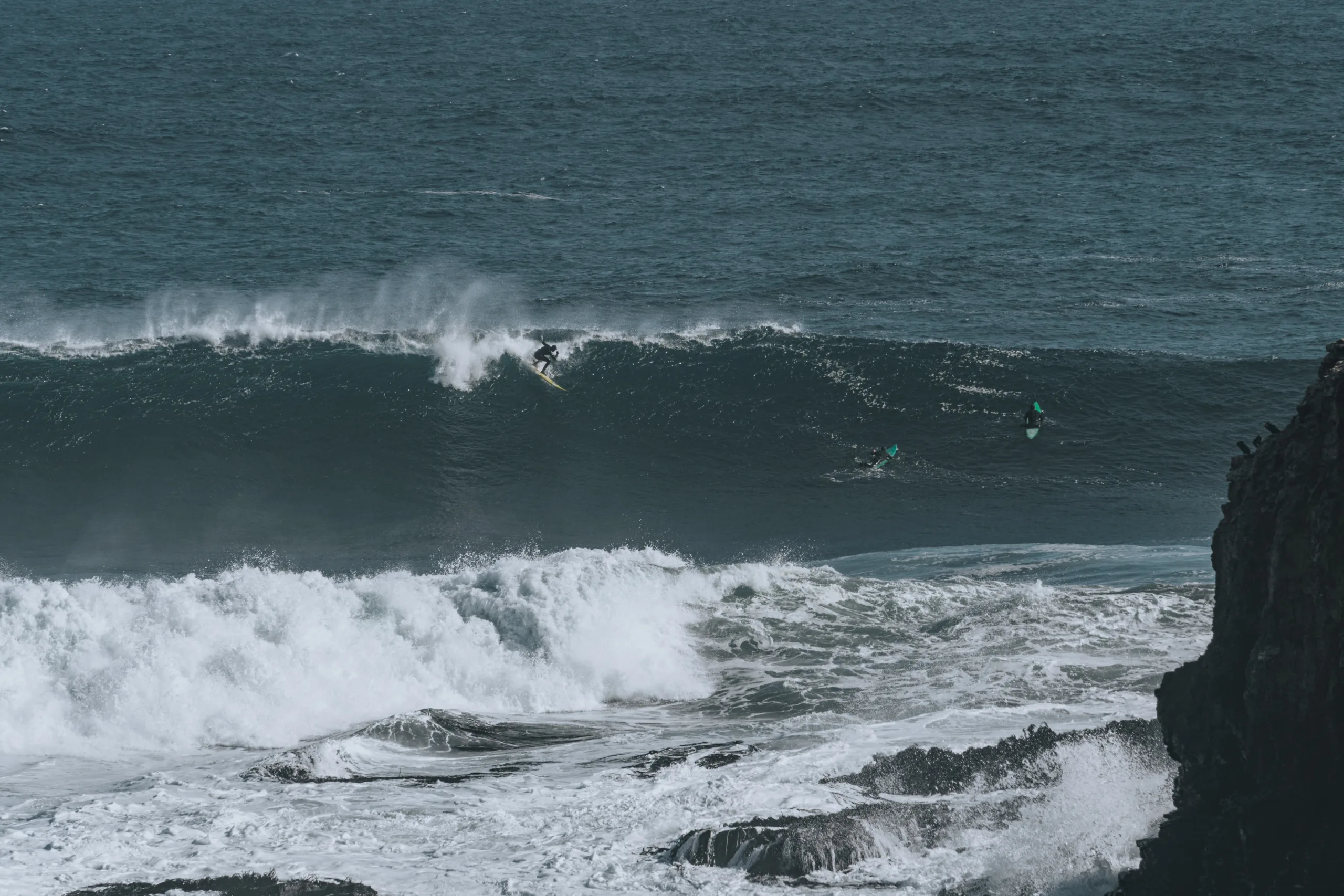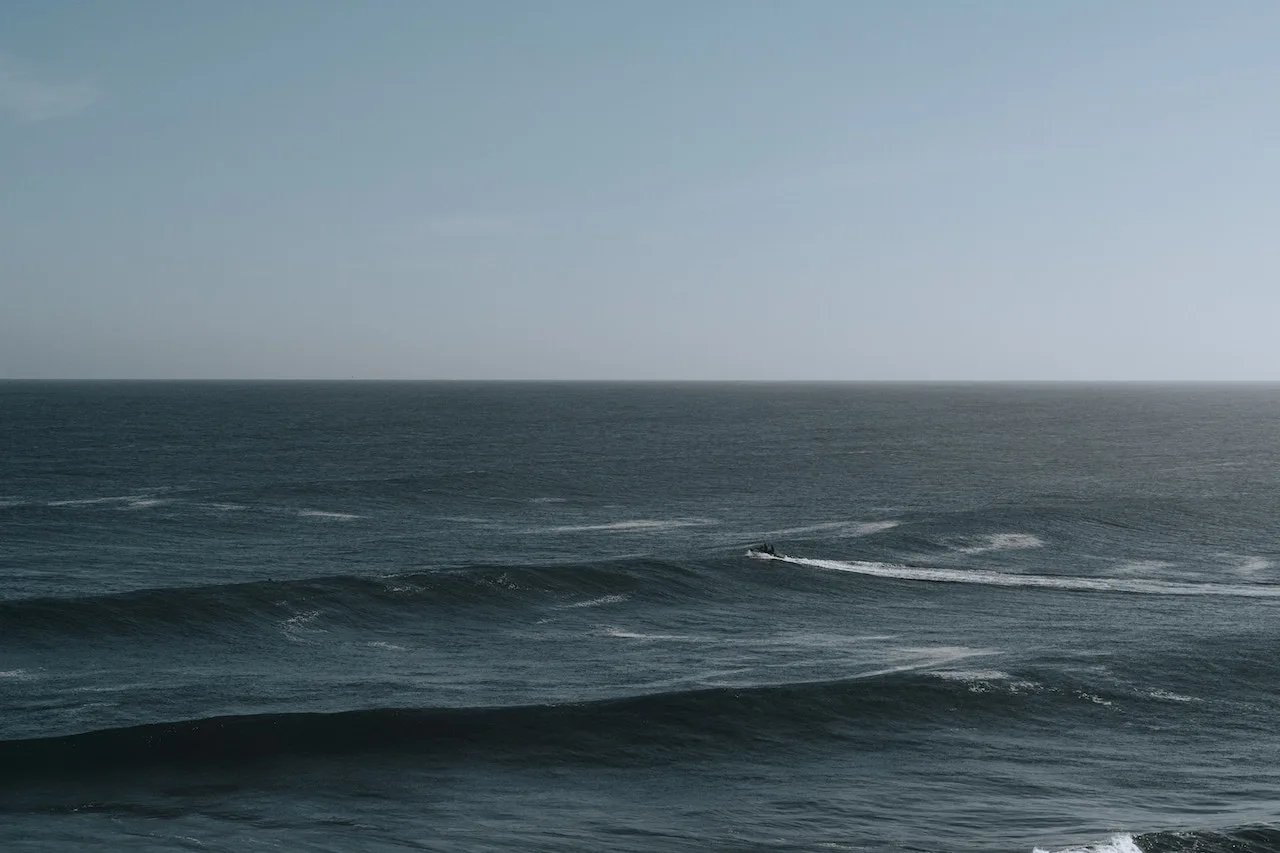It’s no secret that Chile has incredible waves. You’ve seen the videos, right? Cold, remote, pumping lefts…no one out? Well, Chile is pretty much exactly like that in real life. And while the best surf spots in Chile are crowded and the locals hold it down, if you’re willing to explore, Chile’s 4000-mile coastline has countless uncrowded waves.
From the terrifying slabs of Arica to Pichilemu’s famous lefts, and everything in between, there’s heaps on offer here. But where should you start? Here’s everything you need to know for surfing in Chile.
Overview
- Consistency
- World class spots
- Wave variety
- Relatively uncrowded
- Cold
- Localism
- Distance between spots
Table of Contents
Chile Surf Season
Winter (April to October) is when the largest swells hit Chile. This is when the best waves light up and provide those classic lefts that you see in the movies… However, during winter, swells often come with strong winds, and freezing cold weather, which let’s face it, doesn’t make for the most enjoyable surf conditions.
In shoulder seasons, (autumn and spring) you can still find amazing waves, with somewhat calmer conditions. Chile also gets waves from both the north swells (yes, swells make it this far) and the south, so there are waves here all year.

Best Surf Spots in Chile
Northern Chile
Arica
Arica is the main surf town in the North of Chile. A pretty bleak town, with not much to it other than some harrowing slabs. Arica is famous for El Gringo, a heavy slab with powerful lefts and rights breaking onto near-dry reefs. So if you’re looking to head and get barreled amid an intimidating setting, Arica is for you, otherwise, I’d head elsewhere. Read more about surfing in Arica here.
Iquique
Iquique is another town south of Arica. Known for having a number of surf breaks, many of which are slab-orientated. The town isn’t the best place and is riddled with petty crime. Again, if you’re looking for somewhere to get tubed and rub shoulders with aggro locals, this is the place to do it.
Antofagasta
Unlike its Northern Chilean cousins of Arica and Iquique, there’s a little more variety in Antofagasta, with some fun beach breaks, a couple of left points and yep, there is a death slab as well. A good zone for advanced surfers.
Southern Chile
Southern Chile is where the country’s best waves are and the deepest concentration is found in the Pichilemu region.
Pichilemu
Pichilemu is the best and most well-known surf town in Chile. It’s famous for hosting the big wave left, Punta de Lobos, an outstanding big wave break on large swells, whereas on the smaller day, it’s a fun wally pointbreak. In town, there’s a handful of other waves. Read more about surfing Pichilemu here.
South Chile Region
Driving a couple of hours on either side of Pichilemu you’re in for a treat. This is true Chilean surf trip adventure territory and you’ll find countless left points, with the odd beachie thrown in for good measure. This area is all about getting on the road and exploring, there are just so many options that if you’re willing to put the time in, you’re guaranteed to get waves! Read more about surfing in Southern Chile, for everything you need to know for navigating the area.

Surfing in Chile for Beginners
In my experience, the best place to surf in Chile for beginners is Pichilemu. It’s a town with the most learn-to-surf infrastructure and the beach at Infernillo is a great black sand beach (on the inside of Punta de Lobos) is a great beach to learn on.
Getting Around
Getting around in Chile is pretty easy, but distances are vast. So if you plan on visiting different surf towns, for example, heading to Arica, and then down south to Pichilemu, it would be better to fly, as you can find cheap domestic flights (check out Kayak) between most cities.
Buses
If you’re on a budget surf trip to Chile, you can use the bus system. The bus is your best mate as a budget surf travel and thankfully in Chile, there’s a great long-distance bus system. But be wanted, when I say long, I mean fucking long.
We’re talking 24 hours+ between Arica and Santiago. However, if you don’t mind the discomfort, these long-distance routes are a fantastic way to double up on your transport and accommodation for a night all-in-one booking. Check out Busbud for the best and cheapest fares in Chile.
Drive
The best way to get around in Chile is to drive. If you’re after classic Chilean left points, I’d suggest flying into Santiago, hiring a car from the airport, and hitting the road from there. You can find cheap hire cars in Santiago airport on DiscoverCars.com.

Enjoying this post? You might like my complete guide to surfing in South America or other Latin America surf destinations such as everything you need to know about surfing in Costa Rica, the ultimate guide to surfing in Florianopolis or the complete guide to surfing in southern Chile.
Tips for Surfing in Chile
Cold
Yep, it’s cold in Chile. Really cold. In winter, you’ll need a 4/3mm wetsuit, boots, and even a hood. When you’re getting changed in the early hours for that pre-dawn paddle out, pulling on a wet wetsuit, is one of the only reasons that makes you question why you chose Chile for a surf trip.
This quickly fades though, when you’re paddling into empty pumping lefts, just be prepared. A good wetsuit is the best way to stay warm while surfing in Chile, but extras like changing robes and drying hangers can help get your wettie dry and make that changing experience (a tad) better.
Distances
To make the most out of surfing in Chile, you’ll need to drive, distances between surf breaks and Chilean surf towns are vast so you may even drive a few hours just to reach the next spot. Make sure you’re prepared to do this and allocate part of your budget to petrol costs.
Driving
The roads are great throughout Chile, so driving is pleasurable for the most part, But make sure you break it up on longer drives. It’s also worth noting, that for many surf spots, the road turns from asphalt to gravel suddenly and you’ll have to drive over gravel/dirt tracks to reach the better breaks. Most roads are doable in standard hire cars, but if it’s wet (like it was for me), be careful.
Localism
At the best surf spots in Chile, there’s localism. Locals are protective of their spots and like anywhere, make sure you tread carefully and take your turn. Many of the spots here don’t have the crowds of other breaks (particularly down south), so just be respectful.
Swell/Power
Chile gets some serious swell. The coastline faces directly into the onslaught of South Pacific swells, from the north to the south, Chile gets swell, and in fact, most of your time is spent finding waves that are more protected and smaller than the most exposed breaks, rather than waiting for the swell to come up.
Chile Surf Trip Resources
Bus Routes
Hire Cars
Surf Hostels
Final Words
Chile offers something we all look for as surfers, pumping waves (that’s obvious), but also a sense of adventure and maybe, just maybe a chance to combine the two and score a slice of a lesser-known point all to yourself. Chile is a must-do for any surfer and I’d highly recommend visiting the country, particularly down south.
If you’d like to read more about surfing in Chile, check out my other guides, including the complete guide to surfing in Southern Chile, or the guide to surfing in Arica (more than death slabs?). Otherwise, check out my YouTube channel for an even deeper look into some of Chile’s best surf towns. Any questions, please fire away in the comments. Yew!!

